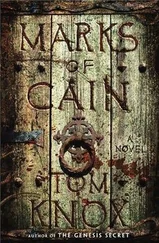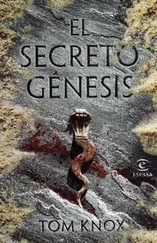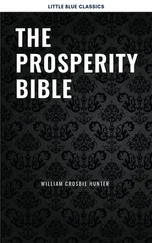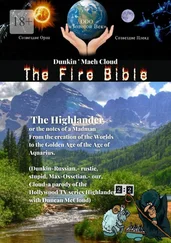
Tom Knox
Bible of the Dead
Copyright © Tom Knox 2011
This book is dedicated to the Tibetan villagers of Balagezong, Yunnan, southwest China.
A darkness will settle on the people of Cambodia. There will be houses but no people in them, roads but no travellers; the land will be ruled by barbarians with no religion; blood will run so deep as to touch the belly of the elephant. Only the deaf and the mute will survive.
Ancient Cambodian Prophecy
Bible of the Dead is a work of fiction. However, it draws on many genuine archaeological, historical and cultural sources.
In particular:
The Plain of Jars is an ancient site in remote central Laos, Southeast Asia. It comprises hundreds of large stone vessels, maybe two thousand years old, randomly scattered across the meadows and fields of a limestone plateau. No one knows who made the jars, or why, or how. Burned remains of humans have been found nearby.
In the late nineteenth century prehistorians working in Lozère, in southern France, discovered a series of skeletons in the cave systems of the region. These human remains exhibited curious and troubling wounds.
In 1923 Joseph Stalin asked a team of French scientists to examine a peculiar kind of crossbreeding, with an eye to creating a more perfect soldier. The laboratory constructed for these experiments still functions today, in Abkhazia, by the Black Sea.
The cave was dark. And cold. Always cold. Even though the last hot autumn sun of the Cevennes was blazing outside, as soon as Julia made that descent, down the metal ladder, into the Cavern of the Swelling, the cold grasped at her: like she was entering a neglected orphanage, full of clammy and demanding hands.
Why was she always unnerved by the initial descent? Surely she should have become accustomed to it by now? All summer she had been doing this: doing her job, digging and scraping in the dank limestone cave systems beneath the Cham des Bondons. Yet the first moment of the working day never got any easier.
As Julia reached the bottom of the ladder she paused. Thinking of that ceaseless cold. Maybe the cave itself was not to blame, maybe it was the entire region: the frigid Lozère.
This remote departement in the forgotten heart of France was beautiful enough. Yet this beauty was married to a chilling emptiness. The departement had been depopulating for centuries. The highest limestone steppe of all, the Causse Mejean, just west of the Cham, was said to be the single most deserted part of France: a great plateau of rock with just a few shepherds remaining. Everyone else had gone. Every thing else had gone. There were no railways in Lozère, they’d closed years ago. The nearest airport was way north, or way south. As for the autoroute, that swept past the entire region with imperial disdain: escaping altogether, at the great Millau viaduct, with a brave and enormous vault.
Like it couldn’t wait to get away.
Was there any reason to linger? The only attraction to detain tourists was the legend of a werewolf on the Margeride – the Bête de Gevaudan ; that, and the Cham des Bondons itself.
And the ancient standing stones, that comprised the Cham des Bondons, were truly extraordinary, dozens of grey monoliths, standing alone and apart, on every cliff and promontory, like frozen warriors frowning down in judgement: at the dark pineforests of the Cevennes.
Yet even the stones were deserted. Untouristed. Neglected. And now only the winds remained, the winds and the wild horses, feeding on the feather-grass.
Julia reached up, switched on the torch of her headband, and crouched, reaching through the crowding gloom to her tool-roll, left there on the cave floor, from yesterday.
She knelt and unvelcro’d the plastic and laid it all out, exposing the trowels and eyeglass, the brushes and plumb-lines. The tool-roll was a gift from her devoted yet sighing parents in Ontario. The tiny family she had left behind.
The wind whistled outside, fluting across the cave opening: like a child blowing air over a bottleneck. The sound was plangent and sad. Julia picked up her tool-roll and crawled further, painfully barking her shin against rock – despite the protection of her soft neoprene kneepads. A few minutes later she halted under a limestone ceiling barely a metre high. Here was her patch. It looked forlorn.
She was used to working down here in the Cave of the Swelling, with her colleagues Kanya and Alex and Annika. But in recent days the little platoon had dwindled: Kanya had gone home to California, finishing the digging season a week early. Alex was elsewhere, working in a cave along the plateau, with the rest of the team. And Annika, her good friend Annika, she was nursing a cold, in her little cottage in the deserted village of Vayssiere, high on the Cham.
But at least, thought Julia, adjusting the beam of her LED headlamp, at least she was still doing proper archaeology. And she only had one more week to make the most of this disappointing season. One more week to find something, to justify her sabbatical, to justify all the time and money spent here. They had a week left. One last week of the season. And then, then what?
The vision of a winter in London, and many winters after that, teaching yawning eighteen-year-olds, was a drag. Julia cursed her meandering mind, and concentrated on her work. Just do it. Even if she knew she wasn’t going to find anything more than a broken bonepin, she also knew she was lucky to be here at all. And the sheer metronomic rhythm of her archaeology was, as always, rather soothing: brush and trowel and sieve, trowel and tweezer and sieve.
The tinkle of her metal tools echoed down the empty cavern.
Julia tried not to think of her loneliness. What if some mad shepherd came down here and raped her? In speleology, no one can hear you scream. She smiled inwardly, at her own fears. She’d gut the guy with her six inch survey peg. Just let him try it.
The hour passed. She bent to her task. Trowel and sift. Trowel and sift and scrape.
She brushed, and troweled. And paused. Feeling her own heart. Beating.
An eye stared back at her.
Julia nearly dropped her brush.
A distinctive white circlet of bone was visible through the black soil, like a crescent moon on a very dark night.
An eyesocket. In a human skull?
Julia squinted, closely, at the orbital bones, and the fine nasal cavity. She felt the pulse of her professional excitement accelerate. An actual human skull.
How old was the cranium? Maybe it was some medieval goatherd, who fell down the hole after a night of rough wine. Maybe it was the corpse of some eighteenth century protestant, fleeing the war of the camisards, but more likely it was Neolithic. The real thing.
The debris of the cave floor was largely Stone Age. They knew that. The other day she had found her tiny fragment of antelope bone pin – dated from 5000 B.C. This skull had to be of the same epoch.
Julia’s hand trembled, for a moment, with excitement. This was the best find of a desultory season in the cave systems beneath the Cham des Bondons. Hell, this was the best find of her entire and desultory career.
She brushed and scraped, then used the most delicate trowel, her precious four-inch silvery leaf-trowel, to wholly disinter the cranium. As she pushed the grit away, she realized – there was something odd about this skull.
It had a hole, high in the forehead.
Читать дальше
Конец ознакомительного отрывка
Купить книгу













